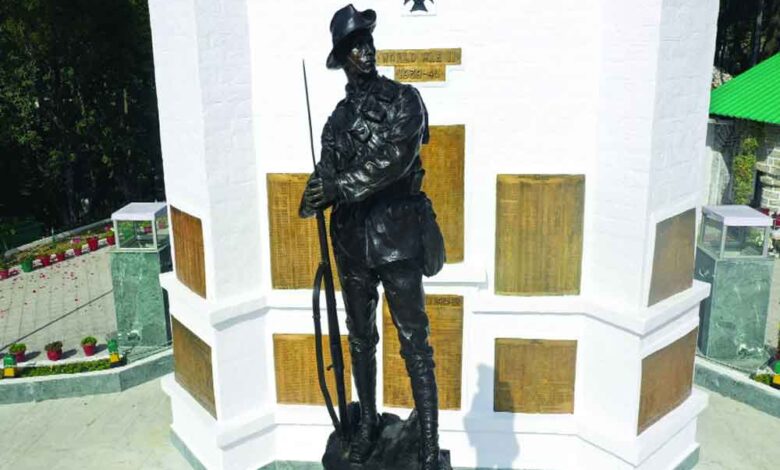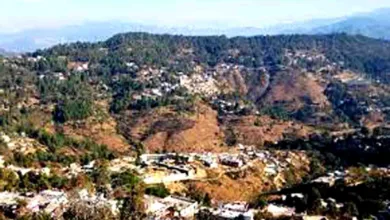The Garhwal Regiment’s glorious military heritage

Lansdowne, steeped in military tradition since the establishment of the first Garhwal Battalion in 1887, tells a tale of valour and colonial legacy
The still air in June over the Bhawani Dutt Joshi Parade Ground carved out of Kaludanda (renamed Lansdowne after the then Viceroy) converts into an air pocket when the fourth batch of 251 Agniveers call out Jai Badri Vishal Ki Jai, the feared Garhwal regiment war cry. The raising of the first Garhwal Battalion was ordered in 1887 by C-in-C, later Viceroy, Lord Roberts. The British may owe India USD 49 Trillion as reparation but their payback was impressive: instruments of governance, strategic culture and infrastructure, including 5000 to 6000 feet high ridge-top cantonments, today’s hill stations like Lansdowne whose Mall Road became the exclusive white’s only- promenade, restricting locals to the windswept ‘Thandi-sadak’ on the reverse slope.
Dotted with pine, oak and rhododendrons, the ridge lights up with the majesty of Nanda Devi towering among the distant Himalayas. The sprawling Bungalow No 6 amongst a hundred such, constructed in 1906 was home to Colonel Mainwaring commandant of 3/9 Royal Garhwal Rifles and was bought by MES for a princely Rs 10,053!
It was after Nepal’s second invasion that Garhwal capitulated and through legendary Jung Bahadur Rana’s progeny married into Garhwal’s Sah ruling family. Scattered but indistinguishable descendants of erstwhile Nepalese can be found in Pathankot village as are remnants of 2/3 Gorkha Rifles also raised here which have an umbilical cord with the Garhwal Regiment. Originally Garhwalis and Kumaonis joined 5 Gorkha Rifles( Frontier Force) whose first Colonel was Bobs Bahadur, Victoria Cross winner, Lord Roberts who gave Veer Garhwali a separate identity.
The nom de plume of the Garhwali soldier is valour: in World War I and Waziristan, it won three Victoria Crosses (Rfn Gabbar Singh Negi -posthumously; Naik Darwan Singh Negi and Lt David Kenny) and innumerable battle and theatre honours and gallantry awards till 1947 that would fill this page. After independence, the Regiment bagged one Ashoka Chakra, four MVC, 18 KC, 51 SC, 52 VrC, and 375 Sena Medals. The Regiment has 22 Infantry battalions, three Rashtriya Rifle battalions and two Territorial Army battalions. To commemorate its unique achievements in operations, the Regiment was conferred the Royal title: Royal Rassi (Lanyard) in 1921 and to honour its braves and martyrs, an iconic bronze statue was built in 1923 which was unveiled by C-in-C, Lord Rawlinson. Designed by makers of Victoria Memorial Calcutta, Martin and Co, the statue on green granite is the most unique and defiant image in the world- of unknown soldiers, the Veer Garhwalis.
Added later was the epic shloka from Mahabharat. Lord Krishna to Arjun: ‘Lament not the death of a warrior; for one killed in battle is honoured in heaven’. It was a silver replica of this Unknown Soldier that PM Modi presented to the PM of France in 2015 to commemorate the centenary of WWI.
The Darwan Singh War Museum is the grand repository of the history and achievements in war and peace of the Regiment. But the creme d la crème of Lansdowne is the Garhwali Officers Mess which is India’s most spectacular, filled with collector’s items. Officers and ladies of the battalion who arrived in 1887 chose this ridge-top locale and declared it their mess which sprouted only in 1892. Its red slanting roof and miniature Victorian-style colonnades are draped with ivy and creepers.
In the middle of the lawn is the still functional Sun Dial measuring time by the position of the sun. Carved below is: “The shadow of my finger cast divides the future from the past; Before it stands the unborn hour in darkness and beyond thy power: Behind its unreturning line the vanished hour no longer thine: One hour alone is in thy hand, the now of which the shadow stands.” Nearby is the ubiquitous Unknown Soldier, covered with bushwork. The Officer’s Mess initially had three large rooms: the main hall, dining room and billiards room. Add-ons were the Card room, the Generals gallery, the indispensable bar and two libraries on either flank. Rooms are resplendent in silver trophies and walls covered by big and small game heads and skins that will draw ire from RSPCA. The Visitors’ Book table is eye-popping and studded with memorabilia. The broken China-glass floor is laid out in a design that radiates towards four Maltese Crosses, the original crest of the Regiment. Crocodile skin sofa sets glisten as no one sits on them. To insert the John Roberts and Co. made billiards table, the entire roof had to be uprooted while the piano from Chappells, Bond Street London (more famous for sartorial products) rests rhythmically in a corner. The glistening mahogany dining table adorning the dining hall is credited to makers C Lazarus also of Calcutta.
Every room has a fireplace with brass railings and customised settings The Card room contains the letter by Field Marshal Bill Slim written in 1967 eulogizing the gallant Garhwali: ” I have commanded Battalions of every Regiment of Indian Army but I never had a better one than 3 Garhwal-and that’s something from a dyed in the wool Gurkha as me to say. But it is true”. The bar has charming watercolour sketches made by a local Gorkha lad, a long-gone Gopal Chhetri that cheer your drinks. The quaint downtown market survives on a small but happy populace determined not to let Lansdowne be renamed either Jaswant Garh (after MVC awardee Jaswant Singh Rawat of 1962 war) or even Bipin Nagar (after late CDS Gen Bipin Rawat whose Shaun village is 30 km away). Soldiers and civilians are agnostic about shedding colonial legacy and wish to retain Lansdowne. Locals say the state government is monumentally corrupt: so ex-servicemen and politicians don’t mix. Still, two Generals made it good. Bhuwan Khanduri who became Chief Minister and TPS (Tipsy) Rawat many times minister while highly decorated Ajay Kothiyal KC, SC, VSM and a double Everester lost his deposit during the last state elections. Subedar Major Shailendra Mohan Bhist located at Garhwal Regiment’s Kotdwar detachment is look-alike brother of Ajay Bisht more famous as Yogi Adityanath!
The clock has moved a full circle: Garhwalis bhullas (brothers) are now again joining the depleting Gorkha Regiments and learning to speak Nepali. The Garhwal regimental legacy is protected by its three symbols: Lord Badrinath, the regimental deity, the iconic Unknown Soldier and the Royal Rassi. They help instil gumption and guile while invoking Jai Badri Vishal Ki Jai.
(The writer, a retired Major General, was Commander, IPKF South, Sri Lanka, and founder member of the Defence Planning Staff, currently the Integrated Defence Staff. The views expressed are personal)







